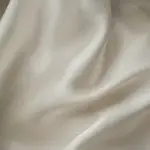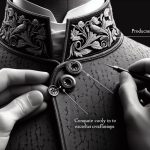Let's address the subtle nuances between capes and cloaks. While often used interchangeably, these two garments hold distinct characteristics that set them apart.
Have you ever wondered about the origins of these elegant pieces and how they have evolved over time? Join me as we uncover the fabric and design variations that differentiate capes from cloaks, and explore the functional differences that make each unique.
Stay tuned to discover the historical significance, styling tips, and practical uses that distinguish these iconic outerwear choices.
Table of Contents
Key Takeaways
- Capes are versatile outerwear, ideal for modern fashion statements and costume parties.
- Cloaks exude mystery and historical authenticity with luxurious materials like velvet or brocade.
- Both capes and cloaks offer protection from elements without restricting movement in cold weather.
- Evolution in design and symbolism reflects a blend of tradition and contemporary style trends.
Origins of Capes and Cloaks
The origins of capes and cloaks can be traced back to ancient civilizations, where they served both practical and symbolic purposes. In various cultures, capes and cloaks held significant cultural significance. For instance, within ancient Rome, the toga, a large draped garment, was a symbol of citizenship and status. Within medieval Europe, cloaks were worn by knights for protection and to display their heraldry. These historical roots have influenced the fabric variations and styling tips of capes and cloaks today.
When it comes to fabric variations, capes and cloaks can be crafted from a wide array of materials such as wool, velvet, silk, or even leather. The choice of fabric can greatly impact the functionality and aesthetic of the garment. For example, a wool cape provides warmth and structure, while a silk cloak exudes luxury and elegance.
Regarding styling tips, capes and cloaks can be versatile additions to any outfit. They can be draped over the shoulders for a classic look or belted at the waist for a more modern silhouette. Experimenting with different lengths, textures, and colors can help personalize and elevate your cape or cloak ensemble.
Fabric and Design Variations
Exploring the myriad fabric and design variations of capes and cloaks reveals a rich tapestry of creativity and functionality woven into these timeless garments. When it comes to fabric choices, capes and cloaks offer a wide range of options. From luxurious velvet to practical wool, the selection of materials impacts both the aesthetic and the functionality of the garment. Color options and patterns further enhance the visual appeal of capes and cloaks, allowing for personal expression and style.
Regarding design, length variations play a significant role in the overall look and feel of capes and cloaks. Whether opting for a short cape for a casual outing or a sweeping cloak for a formal event, the length can dramatically alter the silhouette. Additionally, closures such as buttons, clasps, or ties not only add to the design but also serve a practical purpose in keeping the garment secure. These elements of fabric and design combine to create a versatile and enduring piece of clothing that stands the test of time.
Functional Differences in Wear
Let's explore how capes and cloaks differ in their functionality when worn.
From the materials used to the design features incorporated, these garments serve distinct purposes in various situations.
Understanding these functional disparities can help us appreciate the unique roles capes and cloaks play in our wardrobes.
Material Variations
When comparing capes and cloaks, the choice of material greatly impacts the functionality and wearability of each garment. Cape materials can range from heavy wool for warmth to lighter fabrics like silk for a more elegant look.
Cloak styles often feature luxurious materials like velvet or brocade, adding a regal touch to the garment. Fabric origins play a significant role in determining the quality and durability of capes and cloaks.
Design trends influence the choice of materials, with modern capes often using water-resistant fabrics for practicality, while traditional cloaks may stick to classic wool for authenticity. Understanding the material variations in capes and cloaks can help in selecting the most suitable option for any occasion.
Design Features
Design features play a critical role in distinguishing the functional differences in wear between capes and cloaks. When considering fashion trends, capes often feature more intricate designs and embellishments, making them a stylish statement piece. On the other hand, cloaks tend to have a more traditional and simpler look, emphasizing functionality over elaborate details.
For costume parties, capes are favored for their versatility, allowing for a wide range of characters to be portrayed with the right styling. Cloaks, with their classic and timeless appearance, are often chosen for characters that require a mysterious or historical flair.
Understanding these design nuances can help individuals make informed decisions when choosing between a cape or a cloak for different occasions.
Historical Significance of Each
The historical significance of capes and cloaks spans centuries, reflecting their utility in various historical contexts. From ancient civilizations to modern times, these garments have been imbued with symbolic meaning, representing status, power, and identity.
As fashion trends evolved, capes and cloaks adapted to changing societal norms and aesthetic preferences.
Utility in History
Throughout history, the cape and cloak have served as versatile garments, each with its own unique practical applications and symbolic meanings.
- The cape was a staple in fashion evolution, shifting from a practical outerwear choice to a symbol of nobility and elegance.
- Cloaks were valued for their practicality in history, providing warmth and protection from the elements during long journeys or battles.
- Both garments held cultural symbolism beyond their utilitarian purposes, representing power, mystery, and societal status. The cape often denoted royalty or heroism, while the cloak was associated with anonymity or mystique, making them significant pieces of historical attire.
Symbolism in Culture
As symbols of power and mystery, capes and cloaks have played pivotal roles in shaping cultural identities throughout history. Their cultural significance transcends mere fashion trends, with capes often associated with royalty, nobility, and authority, while cloaks symbolize secrecy, magic, and the supernatural.
In ancient civilizations, leaders wore elaborate capes to showcase their status and dominance. Even in modern times, capes are sometimes used in high fashion to evoke a sense of grandeur and sophistication.
On the other hand, cloaks are often linked to wizards, witches, and fantasy worlds, carrying a mystical aura that captivates the imagination. The symbolism of capes and cloaks continues to evolve, with modern interpretations blending tradition with contemporary style to create new meanings in today's cultural landscape.
Evolution Over Time
Over time, capes and cloaks have undergone significant transformations reflecting changes in societal roles and fashion preferences. As fashion evolution and cultural significance played a pivotal role in shaping these garments, style trends and historical evolution have been key influencers.
- Fashion Evolution: Capes and cloaks have adapted to the changing fashion landscape, shifting from elaborate, heavy designs to more streamlined and versatile styles.
- Cultural Significance: These garments have changed in meaning over the years, from symbols of social status and power to practical outerwear for various occasions.
- Historical Evolution: The evolution of capes and cloaks mirrors shifts in societal norms and values, showcasing how these garments have adapted to meet the needs and desires of different eras.
Styling Tips and Trends
When it comes to styling with capes and cloaks, incorporating versatile pieces can elevate your look effortlessly. Layering techniques play a vital role in creating a chic ensemble. For capes, try layering over a simple turtleneck or a classic button-down shirt for a sophisticated look. Cloaks, on the other hand, can be styled over a fitted dress or tailored pants for a more formal appearance.
Fashion trends often dictate the color coordination and seasonal styling of capes and cloaks. This year, earthy tones like olive green, rust, and mustard are particularly popular for capes, adding a touch of warmth to your outfit. For cloaks, classic neutrals such as black, navy, and camel remain timeless choices that can effortlessly complement any wardrobe.
To stay on-trend, consider experimenting with different textures like wool, cashmere, or even faux fur for a luxurious touch. When it comes to accessorizing capes and cloaks, minimalistic jewelry and a sleek handbag can complete your look with sophistication and flair. By following these styling tips and trends, you can confidently rock your cape or cloak in style.
Pop Culture References and Influences
Exploring how capes and cloaks have subtly influenced pop culture icons and trends offers a fascinating glimpse into the intersection of fashion and media today. In movies, characters like Batman and Dr. Strange have made capes synonymous with superhero prowess and mystery. These characters have inspired a generation of fans to see capes as symbols of power and enigma.
Fashion statements on runways and red carpets have also embraced the elegance and drama that capes and cloaks bring to an outfit. Designers have reinterpreted these traditional garments to create modern looks that blend classic charm with contemporary flair.
The influence of capes and cloaks in pop culture goes beyond mere clothing; it represents a sense of adventure, heroism, and sophistication that resonates with audiences worldwide.
- Movie characters: Batman and Dr. Strange have popularized capes as symbols of superhero identity.
- Fashion statements: Runways and red carpets showcase how capes and cloaks can add drama and elegance to any outfit.
- Modern reinterpretations: Designers are creating contemporary looks by blending classic cape styles with modern fashion trends.
Practical Uses in Different Settings
In various real-world scenarios, capes and cloaks serve practical purposes beyond their fashionable allure. These garments are not just about making a fashion statement; they offer functionality, especially in outdoor activities. Capes are versatile, providing warmth and protection from the elements, while cloaks offer a sense of mystery and elegance while also serving practical purposes.
—
| Practical Uses in Different Settings | |
|---|---|
| Setting | Practical Use |
| Outdoor Adventures | Protection from rain and wind. |
| Historical Reenactments | Adding authenticity to costumes. |
| Cold Weather Activities | Keeping warm without restricting movement. |
| Formal Events | Enhancing elegance and style. |
| Stage Performances | Creating dramatic flair. |
—
Whether you're hiking through the wilderness, attending a formal gala, or portraying a character on stage, capes and cloaks have a place in various settings due to their blend of fashion and functionality.
Maintenance and Care Tips
Moving from discussing the practical uses of capes and cloaks in various settings, let's now focus on the important aspect of maintaining and caring for these garments.
When it comes to keeping your capes and cloaks in top condition, there are a few key things to take into account:
- Storage Solutions: Proper storage is vital to prevent wrinkles and damage. Hanging your cape or cloak on a padded hanger in a well-ventilated area can help maintain its shape and prevent musty odors.
- Cleaning Techniques: Depending on the fabric, cleaning methods may vary. Dry cleaning is often recommended for delicate materials, while some capes and cloaks can be gently hand washed. Always follow the care instructions provided by the manufacturer.
- Weatherproofing and Repair Methods: To protect your garment from the elements, consider weatherproofing sprays or treatments. In case of tears or loose seams, prompt repairs by a professional tailor can extend the lifespan of your cape or cloak.
Frequently Asked Questions
Can Capes and Cloaks Be Worn Interchangeably, or Are There Specific Occasions or Settings Where One Is More Appropriate Than the Other?
I believe capes and cloaks can be worn interchangeably based on personal style and comfort. Fashion trends often dictate which is more popular, but both have historical significance and offer versatility in various occasions.
Are There Any Superstitions or Cultural Beliefs Associated With Wearing Capes or Cloaks?
Superstitions and folklore often intertwine with fashion trends and pop culture. Wearing capes or cloaks can carry symbolic meanings or be seen as protective garments in various traditions. Understanding these associations adds depth to one's style choices.
Do Capes and Cloaks Have Any Symbolic Meanings or Representations in Different Cultures or Time Periods?
Symbolism of capes and cloaks varies across cultures and time. Traditionally, they represent power, mystery, and elegance. Fashion trends may adapt these garments, but historical figures have often utilized capes and cloaks to exude authority and charisma.
Are There Any Famous Individuals or Historical Figures Known for Wearing Capes or Cloaks?
Famous wearers of capes and cloaks span centuries, from royalty like Queen Elizabeth I to superheroes like Batman. Style preferences varied, with some favoring dramatic capes for flair, while others chose cloaks for a mysterious allure.
How Have Advancements in Technology and Materials Influenced the Design and Functionality of Capes and Cloaks in Modern Times?
Advancements in technology and materials have revolutionized cape and cloak design. Materials innovation allows for lighter, more durable fabrics, enhancing functionality. Functional design now incorporates features like hidden pockets for modern convenience, blending style with practicality seamlessly.
- Jaclyn Smith Fabric Coconut: a Review of This Rayon/Polyester Blend - June 29, 2025
- Jaclyn Smith Fabric Coconut: a Review of This Rayon/Polyester Blend - June 29, 2025
- How to Get Coconut Oil off Fabric Without Washing - June 29, 2025







